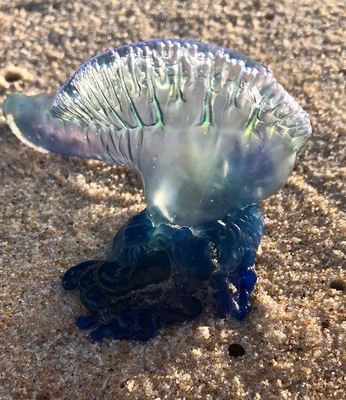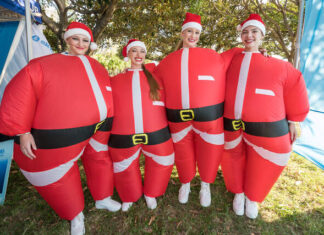A “perfect storm” of conditions including warm water, wind direction and holiday makers has caused a bumper bluebottle season and record numbers of stings, says University of the Sunshine Coast graduate research ecologist Letricia Delaney. Letricia who studied Queensland jellyfish trends for her Honours research in 2016 under the supervision of Associate Professor David Schoeman found there tended to be a longer stinger season during the El Niño weather cycle which usually lasts one year and is associated with warmer waters.
“But larger 20-year natural cycles in global jellyfish abundance also occur, the cause of which is still unknown,” she said.
“On top of this, climate change is intensifying our hot summers.”
Bluebottles are “passive floaters” and their location is entirely determined by wind, waves and currents, with strong offshore winds driving many onshore in the past week, particularly on north-facing beaches, she said.
They mostly feed on small fish, crustaceans and molluscs and, in turn, are eaten by the blue dragon nudibranch, which stores the stinging cells for its own defences.
“Unfortunately, it is likely to continue as we predict a longer stinger season in Queensland this summer,” she said.
Letricia said several stings by Carukia barnesi, a type of Irukandji jellyfish in the waters on the west-side of Fraser Island for the third year in a row, suggest the species had established there, but as “small and delicate creatures” they were unlikely to thrive in surf beaches.
“There is currently disagreement between scientists as to whether this species of Irukandji will thrive further south and more research into this area is needed. We should have more answers in the coming years,” she said.







